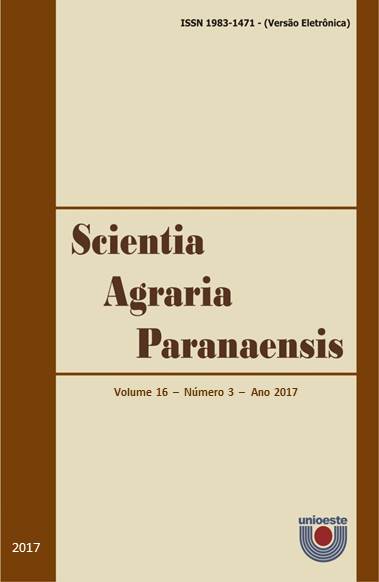Leaching columns with sandy and clay texture soils and application of biosolids
Mots-clés :
biofertilização, granulometria, lixiviação, lodo de esgoto, percolação.Résumé
The objective of this research was to evaluate the contaminant potential of the leachate from soils treated with increasing doses of biosolids. The experiment was carried out in protected cultivation in clayey (Eutrophic RED LATOSOL) and sandy texture (Dystrophic YELLOW RED LATOSOL) soils. The experimental design was completely randomized with five treatments, six repetitions and two soil types: T1 - absence of biosolids, T2-T6, respectively 0, 15, 30, 45 and 60 ton ha-1 of biosolids. The vessels (leaching column) were made by PVC tubes 0.50 m high and 0.10 m in diameter at its base is adapted a perforated PVC cap for collecting the leached material. Each column was filled with 3,141.6 cm3 soil (sandy or clayey), of which the amounts of biosolid. After this stage, the plots were taken to 70% of the field capacity incubated for 60 days and after that period the leachate was collected and evaluated as: pH, electrical conductivity and contents of K, Ca and Mg. The results indicated that increased doses of biosolids lead to elevated pH. It was concluded that the clay soil supported higher doses of biosolids in relation to the sandy soil, presenting leachates with lower pollutant potential.
Téléchargements
Fichiers supplémentaires
- Colunas de lixiviação com solos de textura arenosa e argilosa e aplicação de biossólidos (Português (Brasil))
- Colunas de lixiviação com solos de textura arenosa e argilosa e aplicação de biossólidos (Português (Brasil))
- Colunas de lixiviação com solos de textura arenosa e argilosa e aplicação de biossólidos (Português (Brasil))
Publié-e
Comment citer
Numéro
Rubrique
Licence
Aviso de Direito Autoral Creative Commons
Política para Periódicos de Acesso Livre
Autores que publicam nesta revista concordam com os seguintes termos:
1. Autores mantém os direitos autorais e concedem à revista o direito de primeira publicação, com o trabalho simultaneamente licenciado sob a Licença Creative Commons Attribution que permite o compartilhamento do trabalho com reconhecimento da autoria e publicação inicial nesta revista.2. Autores têm autorização para assumir contratos adicionais separadamente, para distribuição não-exclusiva da versão do trabalho publicada nesta revista (ex.: publicar em repositório institucional ou como capítulo de livro), com reconhecimento de autoria e publicação inicial nesta revista.
3. Autores têm permissão e são estimulados a publicar e distribuir seu trabalho online (ex.: em repositórios institucionais ou na sua página pessoal) a qualquer ponto antes ou durante o processo editorial, já que isso pode gerar alterações produtivas, bem como aumentar o impacto e a citação do trabalho publicado (Veja O Efeito do Acesso Livre).
Licença Creative Commons
Esta obra está licenciada com uma Licença Creative Commons Atribuição-NãoComercial-CompartilhaIgual 4.0 Internacional, o que permite compartilhar, copiar, distribuir, exibir, reproduzir, a totalidade ou partes desde que não tenha objetivo comercial e sejam citados os autores e a fonte.


